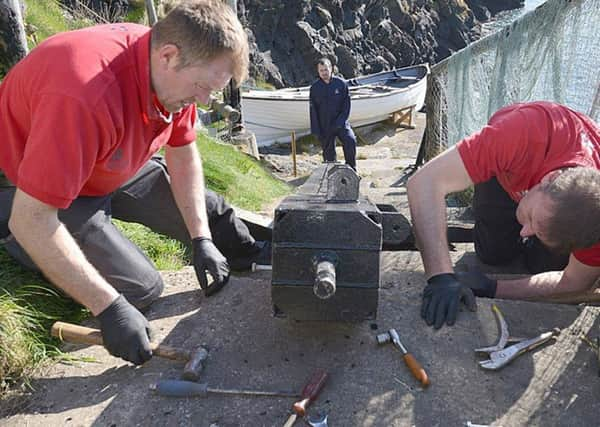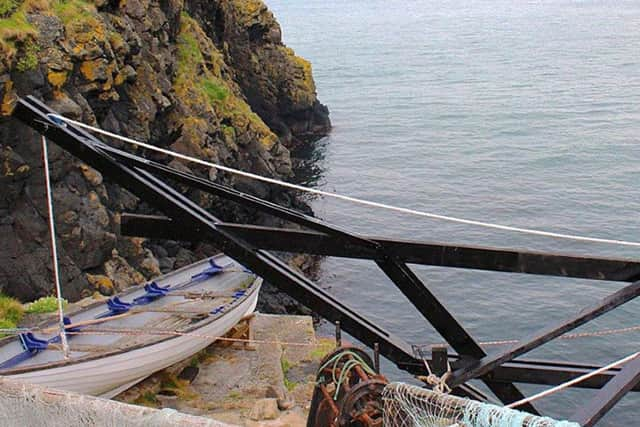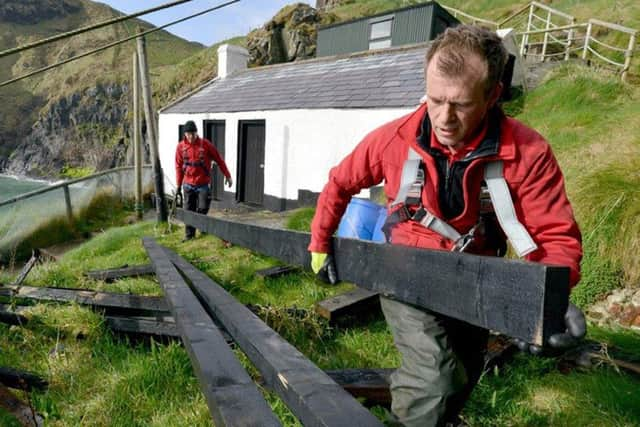Carrick-a-Rede crane replaced after being washed away in a storm


A wooden crane, secured in place with the help of steel fixtures, had stood beside the island’s small fishing cottage for about 100 years in order to hoist boats in and out of the water.
Restoration work had been done on the old crane in 2012, but it did not prevent it being wrecked amid heavy weather in 2014.
Advertisement
Hide AdAdvertisement
Hide AdThe National Trust has now completed a replacement version, allowing the popular visitor attraction to retain the same look that it had when it was still a working fishery.


The new crane was completed at a cost of around £8,000, and around 300 man hours-worth of labour.
It was built to the exact same kind of design as the old one – but has also been treated with modern chemicals to help preserve it.
Though capable of working, the lack of a regular fishing today means it is unlikely to be called into action.
Advertisement
Hide AdAdvertisement
Hide AdFrank Devlin, National Trust Countryside Manager for the Causeway Coast and Glens, said constructing the replacement crane involved quite some “guesstimation”.


When it came to the main piece linking the crane to the land, he said: “I didn’t have any measurements as the bottom part had fallen off in the sea!”
He added: “The crane really is the final link in the journey for visitors. Having it reinstalled at Carrick-a-Rede will help people make sense of the fishing industry that was so important to us here on the causeway coast.”
Carrick-a-Rede means “rock in the road” – an obstacle for the migrating salmon as they searched for the river in which they were born.
Advertisement
Hide AdAdvertisement
Hide AdThe fishermen would winch a boat down and set traps for the salmon, which hugged the island on their migration around the north Antrim coast.


Other recent restoration work at the island:
The island is connected to the mainland via a rope bridge which attracts hundreds of thousands of visitors each year.
The bridge spans a sheer drop of roughly 100ft into the sea, and had been replaced by the National Trust in 2012 (with the little fishing cottage also undergoing a renovation at the time).
The first truly modern rope bridge was believed to have been installed in around 2000.
Advertisement
Hide AdAdvertisement
Hide Ad

Kevin Denvir, director of engineering for the firm Heyn, told the News Letter during the time of the 2012 bridge replacement that in years gone by fishermen had used materials “of an unknown vintage – probably old fishing wires they got off a trawler” as the bridge’s basis.
Alex Colgan, the last fisherman to have worked on the island, told the News Letter in 2012: “I suppose it was dangerous. If health and safety had come around at that time, they’d have closed you down.”